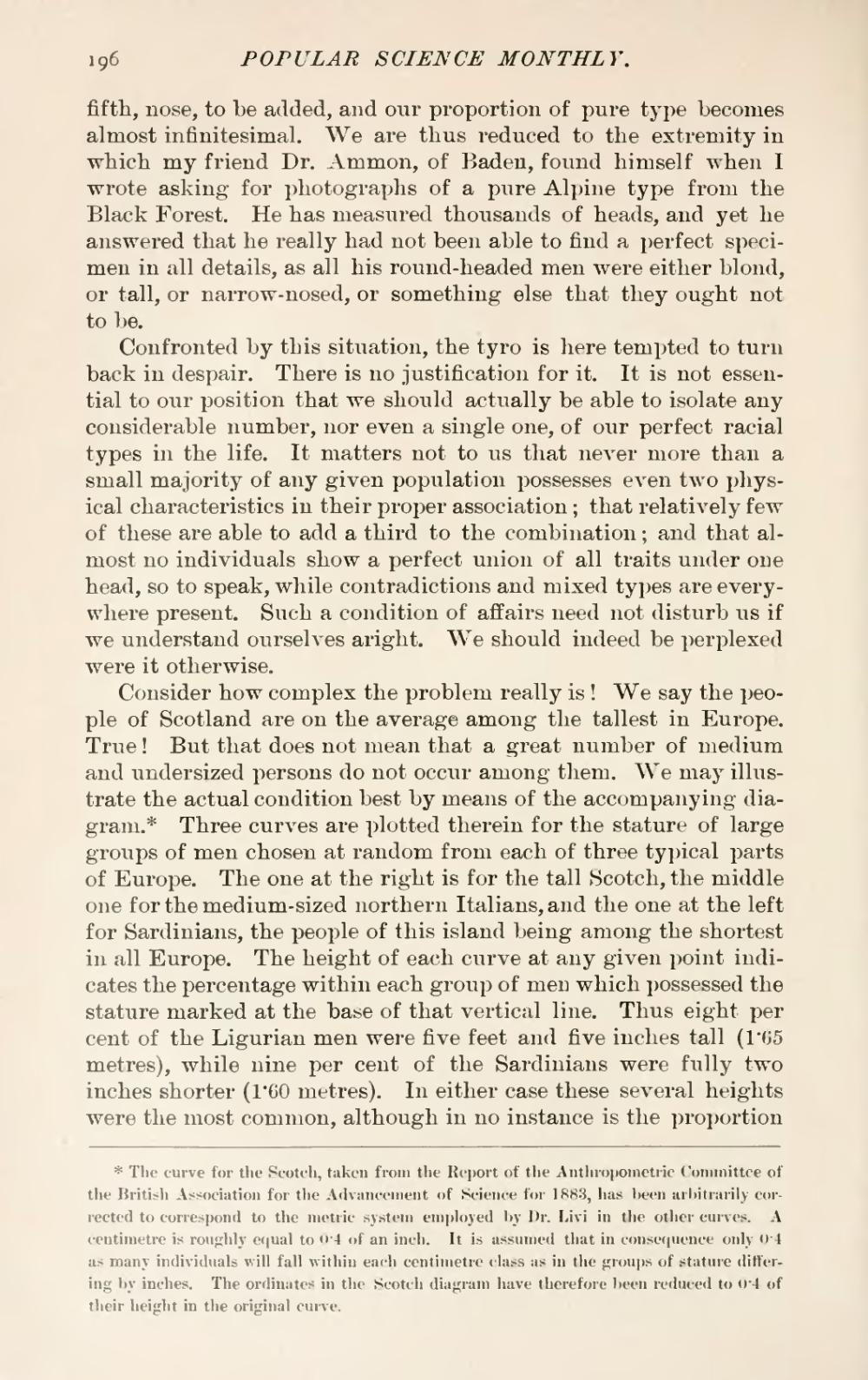fifth, nose, to be added, and our proportion of pure type becomes almost infinitesimal. We are thus reduced to the extremity in which my friend Dr. Ammon, of Baden, found himself when I wrote asking for photographs of a pure Alpine type from the Black Forest. He has measured thousands of heads, and yet he answered that he really had not been able to find a perfect specimen in all details, as all his round-headed men were either blond, or tall, or narrow-nosed, or something else that they ought not to be.
Confronted by this situation, the tyro is here tempted to turn back in despair. There is no justification for it. It is not essential to our position that we should actually be able to isolate any considerable number, nor even a single one, of our perfect racial types in the life. It matters not to us that never more than a small majority of any given population possesses even two physical characteristics in their proper association; that relatively few of these are able to add a third to the combination; and that almost no individuals show a perfect union of all traits under one head, so to speak, while contradictions and mixed types are everywhere present. Such a condition of affairs need not disturb us if we understand ourselves aright. We should indeed be perplexed were it otherwise.
Consider how complex the problem really is! We say the people of Scotland are on the average among the tallest in Europe. True! But that does not mean that a great number of medium and undersized persons do not occur among them. We may illustrate the actual condition best by means of the accompanying diagram.[1] Three curves are plotted therein for the stature of large groups of men chosen at random from each of three typical parts of Europe. The one at the right is for the tall Scotch, the middle one for the medium-sized northern Italians, and the one at the left for Sardinians, the people of this island being among the shortest in all Europe. The height of each curve at any given point indicates the percentage within each group of men which possessed the stature marked at the base of that vertical line. Thus eight per cent of the Ligurian men were five feet and five inches tall (1·65 metres), while nine per cent of the Sardinians were fully two inches shorter (1·60 metres). In either case these several heights were the most common, although in no instance is the proportion
- ↑ The curve for the Scotch, taken from the Report of the Anthropometric Committee of the British Association for the Advancement of Science for 1883, has been arbitrarily corrected to correspond to the metric system employed by Dr. Livi in the other curves. A centimetre is roughly equal to 0·4 of an inch. It is assumed that in consequence only 0·4 as many individuals will fall within each centimetre class as in the groups of stature differing by inches. The ordinates in the Scotch diagram have therefore been reduced to 0·4 of their height in the original curve.

